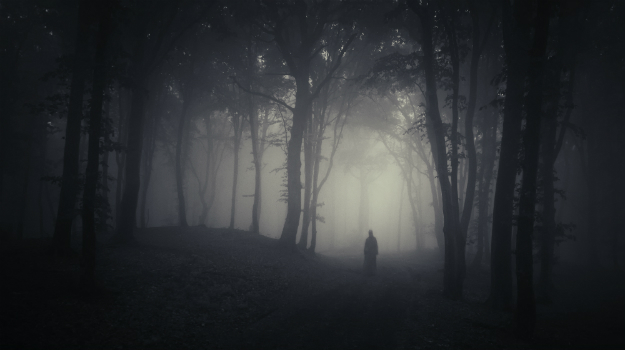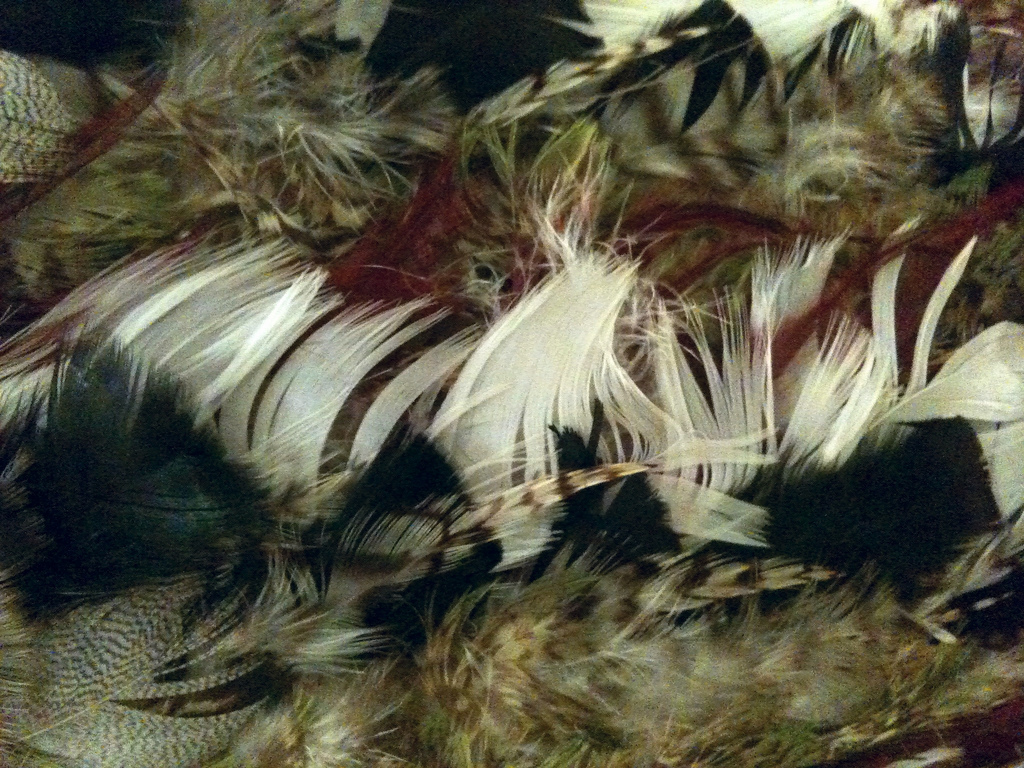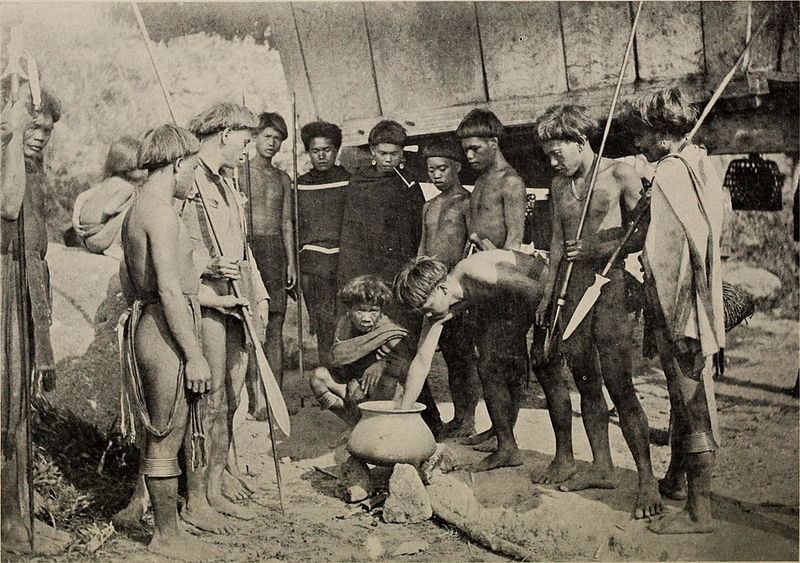The Tinakchi from the mountain range of Kalinga are a classic example of “unseen beings” that are often a pivotal element to staple horror stories. Called by the people from the mountain as “cha tagun ajipun maila” (people who can’t be seen), Tinakchi seems to be on par with the likes of Engkanto, Palasekan and Tahamaling who exist along side people while hiding their presence. Often they blend mystery into the mundane life of normal people; the usual root cause of supernatural events that can’t been comprehended or explained.
But Tinakchi have a distinct quality beyond its mysterious nature; unlike in tales of terror where the unseen is often the malevolent, Tinkachi are not the sower of nightmares. Instead they play a unique role in the community of the Kalinga, despite only very few having seen or felt their existence.

Unseen Dwellers at Mt. Kechangon
Kalinga boasts of 152 villages of which some are situated near mountains and highlands. One of them is Tanglag, a community of farmers in the western section of the municipality of Lubuagan. Along the border of this simple community is a lone mountain of rich greenery called Mt. Kechangon. Besides being a favorite spot for grazing cow and carabao, this mountain holds more than just a beautiful landscape for sightseers. A story among the people of Tanglag narrates that this mountain is special. Not because it houses rare wildlife but that there is something that dwells on it that has given goose bump inducing experiences to some.
Being lost, being transported from one place to another, unexplained illnesses and loud voices from unknown sources are often recounted by people who have found themselves in the heart of Kechangon. All of these incidents are said to be orchestrated by none other than the Tinakchi. Based on the tales of those who have had an encounter with them, Tinakchi are group of spirits roaming in Mt. Kechangon and usually heralded with their hurrying foot steps and loud voices as if it was coming from a group of people conversing loudly with one another.
If that is not enough to make the hair on the back of your neck stand up, the personal accounts of people who found themselves roaming in Kechangon just might. According to the documentations from the book “Indigenous Earth Wisdom: a documentation of cosmologies of the indigenous people of Cordillera”, a young teacher who didn’t believe in Tinakchi once went hunting in Kechangon. While waiting for a wild boar, he dozed off above a tree. As he woke up, he was startled to find himself in the middle of a rice field in Malyo, another village in Kalinga. He still had his shotgun when he was transported.
Another encounter was from two hunters who heard strange noises in the mountain during their trip. They couldn’t see where the voices were coming from, which incited fear in them. Suddenly the voices became louder and someone shouted “Yuka!”. This phrase is commonly shouted by the village people to call their pigs who freely roams in their land. One of the hunters nearly shot blindly in the mountain but remembered that one of their elders instructed them never to shoot something they didn’t see.
Eventually, the voices subsided and both the hunters realized they must be from the Tinakchi.
The Man In Feathers
The physical appearance of Tinakchi was brought to light after the story of a man named Polok from Cagaluan. Polok was an ordinary man who was visited by 2 women that he didn’t personally know. These strange women with unknown origins visited him twice. During the second time they managed to persuade Polok to join them at Mt. Kechangon. They hid him in a crevice where he was only able to stick out one of his feet. Later on, the neighbors of Polok got worried for he had not yet returned home for several days. That’s when they decided to create a search party for him.
Luckily, Polok saw his neighbors moving around the outside of the crevice. Yet surprisingly, whatever he did they couldn’t seem to notice or hear him. Frustrated, Polok could only chew his betel nut (Nganga) and spit it out. The 2 women and their leader upon seeing the red spittle of Polok immediately return the man on his village; they mistook the spittle as blood and this made them realize that Polok is not their kind.
When his neighbors asked Polok about the people who alleged abducted him, he only said “tagu cha met” which means they are people. However, one of the noticeable descriptions he relayed to them was that the leader of the 2 women wore headgear decorated with chicken feathers.

Enemies or Friends: Tinakchi as the Protector Spirit
Despite the supernatural tales surrounding Tinakhi, the elders consider these entities as good ones. In truth, they are protecting the forest and all the creatures that live within it. Hunters conduct a ritual of burning a plant called phugew at Mt. Kechangon to capture wild boars. During the ritual, they will say a prayer of permission: “inkami lasapon Kechangon, ta mangaya kami laman” (we will burn Kechangon so we can get wild boars). They will then create a circle of fire from the phugew to trap the wild boars. Those who escape the circle can be taken by the hunters, and those who stay in the circle will be offered to the Tinakchi.

Besides being a nature a spirit, Tinakchi act somewhat like the guardian spirit of the Tanglag tribe. During a peace pact with other tribes, the Tanglag often called their Tinakchi and shout: “chikayan tinakchi mi intako makivochong” (our Tinakchi come with us to the peace pact). Tinakchi are said to protect the tribe from the malevolent spirit that the other tribes might carry during their pact. Failure to call Tinakchi will leave the attendees of the peace pact to suffer with sickness.
Much like the engkantos, the Tanglad tribe pay respect to the Tinakchi whenever they will pass through a forest, whispering, “aji kayo gumimao,ta lumaos kami” (don’t mind us, we are just passing through). In some of their celebrations, they also call their Tinakchi to join them in feasting with their food as if they were like humans.
Co-existing with the Unseen
Due to their mystical nature, it is easy to be afraid of the Tinakchi. Like their engkanto counterparts, the stories surrounding them are almost always meant to terrify. But then again, its ignorance to things that make us fear them. Digging around for facts and understanding the origin and nature of every lore and of every creatures in our own mythos could help lift the curtain of fear that has always been there shrouding our mind. Perhaps this is the right time for us to satisfy our curiosity so that we might understand, rather than to run out of sheer terror.
Source:
Indigenous Earth Wisdom: A documentation of the Cosmologies of the Indigenous People of the Cordillera(Fangloy, Dulawan, Macay, Regpala and Ruiz, 2015).
ALSO READ: IFUGAO DIVINITIES: Philippine Mythology & Beliefs
Currently collecting books (fiction and non-fiction) involving Philippine mythology and folklore. His favorite lower mythological creature is the Bakunawa because he too is curious what the moon or sun taste like.


